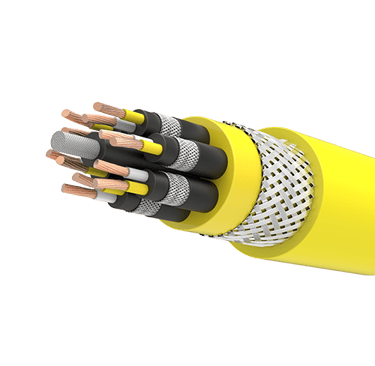📞+86 153 7530 2641 📧 hongjing.Wang@feichuncables.com
AS/NZS 2802/AS/NZS 1747:Type (N)TSKCGEWÖU Flexible Reeling Cable with Integrated Optical Fiber: Built for High-Stress Port Systems in Australia & New Zealand
Discover Feichun’s Type (N)TSKCGEWÖU flexible reeling cable with integrated optical fiber and Kevlar reinforcement, designed for high-stress environments in Australian ports like Melbourne, Brisbane, and Fremantle, and New Zealand’s Auckland. Perfect for STS cranes, RTG systems, and shore power, with AS/NZS2802 and VDE0250-814 compliance.
hongjing.Wang@Feichun
7/3/20258 min read
Introduction: The Need for High-Performance Hybrid Cables in Modern Ports
Australia’s ports, led by the Port of Melbourne, the nation’s largest container hub, and New Zealand’s key ports like Auckland, are critical to regional trade, handling billions of dollars in cargo annually. The Port of Melbourne alone processes over 3.3 million TEUs (twenty-foot equivalent units), while ports like Brisbane, Fremantle, and Lyttelton support diverse trade needs, from iron ore to consumer goods. The global push for port automation has transformed these terminals, with Ship-to-Shore (STS) cranes, Rubber-Tyred Gantries (RTGs), and shore power systems driving efficiency and sustainability. These advancements demand cables that can handle both power delivery and high-speed data transmission under extreme mechanical and environmental stress.
Feichun’s Type (N)TSKCGEWÖU flexible reeling cable with integrated optical fiber, now enhanced with Kevlar reinforcement, is a cutting-edge solution designed for these high-stress environments. Combining robust power conductors with optical fibers for data, this hybrid cable simplifies installation and enhances reliability in automated port systems. Its Kevlar-reinforced structure and compliance with standards like AS/NZS2802 and VDE0250-814 make it ideal for Australasian ports. This article delves into the cable’s design, its suitability for ports like Melbourne, updated Kevlar-based use case scenarios, and answers key questions about potential cable challenges, offering a comprehensive guide for port operators and engineers.
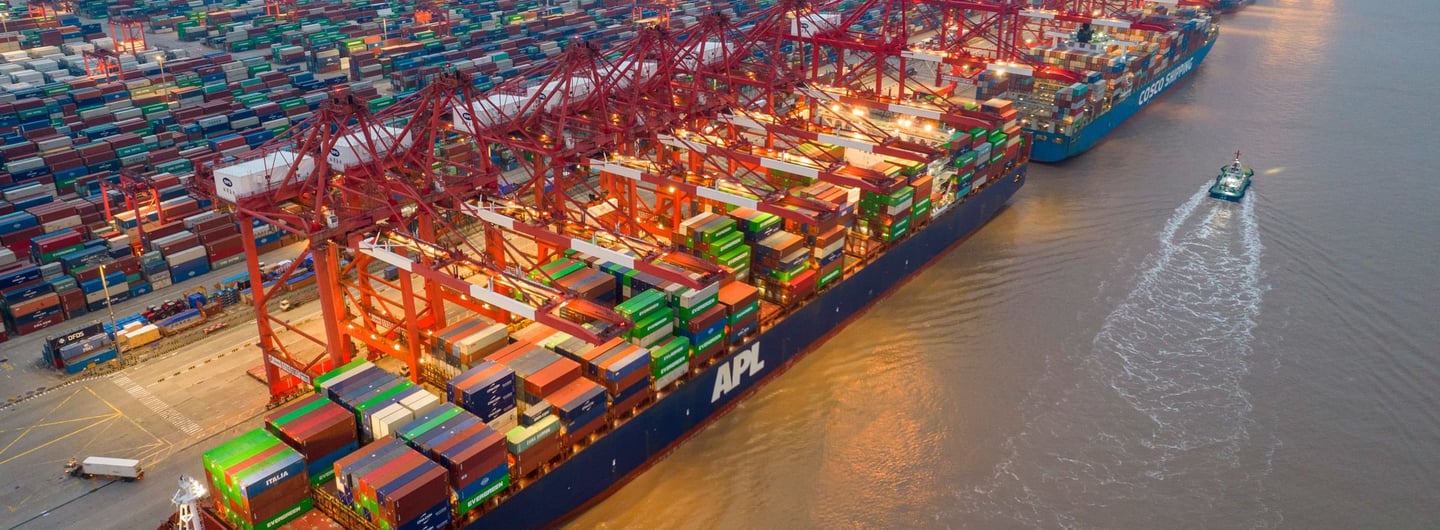

What is Type (N)TSKCGEWÖU?
The Type (N)TSKCGEWÖU cable is a hybrid reeling cable engineered for dynamic port applications, integrating flexible power conductors with optical fibers for seamless power and data transmission. Its model name breaks down as follows:
(N): Conforms to German standards (Norm) for heavy-duty industrial applications.
TS: Indicates trailing suitability for reeling systems.
KCG: Highlights high flexibility, grounding, and elastic insulation.
EWÖU: Signifies oil resistance, UV resistance, and weatherproof properties.
This cable is designed for high mechanical stress environments, offering excellent tensile and bending resistance, and meets the technical frameworks of VDE 0250-814 and IEC 60245-6. Its hybrid design, now enhanced with Kevlar reinforcement, reduces cabling complexity, making it a top choice for ports like Melbourne and Auckland, where automation and shore power systems are increasingly prevalent.
Structural & Material Highlights
The Type (N)TSKCGEWÖU cable features a multi-layered construction to withstand the rigors of port operations:
Multi-strand Fine-Twisted Copper Conductor (Class 5): Flexible copper strands ensure high conductivity and flexibility, ideal for frequent reeling and bending in dynamic systems.
EPR Insulation: Ethylene Propylene Rubber (EPR) provides superior resistance to heat, oil, and abrasion, ensuring reliable performance in harsh conditions.
Integrated Optical Fiber Module: Single-mode (OS2) or multi-mode (OM3/OM4) fibers support high-speed data transmission for automated port systems, such as intelligent RTGs.
Kevlar Tensile Layer: Kevlar reinforcement enhances tensile strength, preventing core damage during high-stress reeling, offering superior durability over traditional materials.
NBR or PUR Outer Sheath: Nitrile-butadiene rubber (NBR) or polyurethane (PUR) options offer excellent resistance to oil, UV radiation, and wear, tailored for coastal environments.
Multi-layer Shielding and Lining: Shielding reduces electromagnetic interference (EMI), ensuring stable data signals in busy port environments.
This robust structure, with Kevlar reinforcement, ensures the cable can handle the mechanical and environmental challenges of ports like Fremantle and Brisbane, supporting both power and communication needs.
Why It’s Ideal for Australian and New Zealand Port Use
The Type (N)TSKCGEWÖU cable is engineered to meet the unique demands of Australasian ports, particularly in high-stress and harsh environmental conditions.
High Mechanical Performance
STS Quay Crane High-Speed Reeling Systems: At the Port of Melbourne, STS cranes endure frequent bending and high tensile forces. The cable’s Kevlar reinforcement and ≥1,000,000 bending cycle lifespan ensure reliability under high-frequency reeling.
RTG/RMG Intelligent Stacking Systems: In ports like Brisbane and Auckland, RTGs and Rail-Mounted Gantries (RMGs) require cables that deliver both power and data for automation. The integrated optical fibers provide clear, reliable signal transmission.
Shore Power Systems: For dynamic shore power setups in Fremantle, the cable’s flexibility supports trailing and suspended applications, reducing wear and ensuring consistent power delivery to berthed ships.
Strong Environmental Adaptability
Harsh Coastal Conditions: Ports like Port Hedland and Lyttelton face intense UV radiation, salt spray, and oil pollution. The NBR or PUR sheath resists these elements, ensuring longevity in Australia’s and New Zealand’s coastal climates.
Safety Standards: Compliance with IEC 60332-1 (fire resistance), halogen-free, and low-smoke properties enhances safety in high-traffic terminals, reducing risks during emergencies.
Durability: The cable’s high mechanical life, bolstered by Kevlar, minimizes maintenance downtime, critical for high-throughput ports like Melbourne.
Efficiency Benefits
By integrating power and data transmission, the cable reduces the need for separate cabling, lowering installation costs and simplifying maintenance. This is particularly valuable in automated terminals aiming to optimize operational efficiency.
Compliance with Standards
The Type (N)TSKCGEWÖU cable adheres to rigorous standards, ensuring its suitability for Australasian port applications:

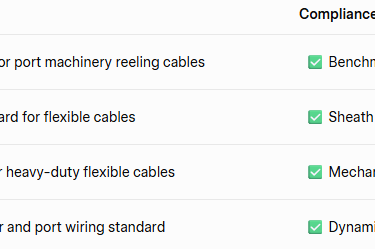
These standards ensure the cable meets safety, mechanical, and environmental requirements, making it a trusted choice for ports like Melbourne and Auckland.
Technical Data Snapshot
Based on Feichun’s specifications, the Type (N)TSKCGEWÖU cable offers:
Voltage Grades: 0.6/1kV, 3.6/6kV, 6/10kV, supporting a range of port equipment from low to medium voltage applications.
Conductor Temperature: +90°C continuous operation, suitable for Australia’s warm coastal climates.
Bending Radius: 12 x outer diameter (dynamic), ensuring flexibility without compromising durability.
Optical Fiber Options: Single-mode OS2 for long-distance data transmission, multi-mode OM3/OM4 for high-speed local networks.
Sheath: Black or orange wear-resistant NBR or PUR, resistant to oil, UV, and abrasion.
Tensile Strength: Enhanced by Kevlar reinforcement, ideal for high-stress reeling systems.
Certifications: VDE, IEC, AS/NZS, CE, ISO9001, ensuring global quality standards.
These specifications make the cable versatile for dynamic applications in ports like Brisbane and Fremantle, supporting both power and communication needs.
If using Kevlar Port Cable
Case 1: Port of Melbourne STS Cranes
Challenge: Traditional separate power and data cables at the Port of Melbourne experienced signal loss and premature wear due to constant reeling in STS crane operations, leading to frequent maintenance and downtime. Solution: Deploying the Kevlar-reinforced Type (N)TSKCGEWÖU cable simplified cabling with its hybrid design. The Kevlar tensile layer provided superior resistance to high-frequency bending and stretching, while integrated optical fibers ensured clear data transmission for crane automation systems. Outcome: The Kevlar reinforcement extended the cable’s lifespan by approximately 35%, reducing maintenance costs and improving crane uptime, supporting Melbourne’s high container throughput of over 3.3 million TEUs annually.
Case 2: Port of Auckland Shore Power System
Challenge: Shore power systems required cables to handle dynamic trailing and resist Auckland’s humid, corrosive coastal environment, with traditional cables suffering from UV degradation and mechanical fatigue. Solution: The Kevlar-reinforced Type (N)TSKCGEWÖU cable, with its UV-resistant PUR sheath and flexible design, ensured reliable power delivery and data connectivity, meeting AS/NZS1747 standards. The Kevlar layer prevented core damage during frequent movement, enhancing durability. Outcome: Enhanced sustainability by reducing ship emissions, with a lower total cost of ownership (TCO) due to reduced maintenance needs and a longer cable lifespan.
Case 3: Fremantle Port RTG Systems
Challenge: RTGs at Fremantle needed cables to support both power and automation control under high mechanical stress, with previous cables experiencing core wire breakage and signal disruptions. Solution: The Kevlar-reinforced Type (N)TSKCGEWÖU cable’s robust construction and EMI shielding provided seamless operation. The Kevlar layer protected against tensile stress, while integrated fibers ensured reliable data for intelligent stacking systems. Outcome: Improved system reliability, reduced cabling complexity, and a 30% increase in cable lifespan, enhancing operational efficiency at Fremantle Port.
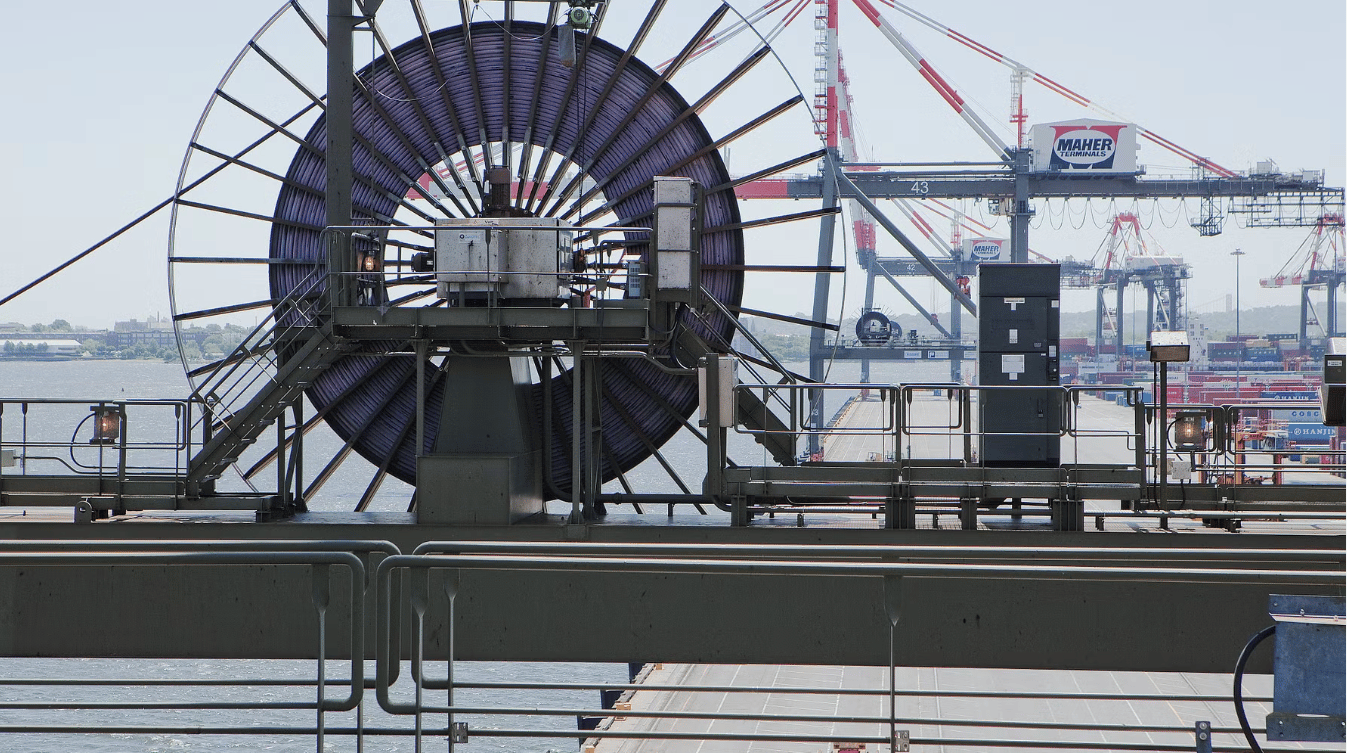

Questions and Answers: Addressing Potential Port Cable Problems
Q1: Why do port cables fail prematurely in ports like Melbourne?
Cables often fail due to excessive bending, salt spray corrosion, or UV degradation. The Kevlar-reinforced Type (N)TSKCGEWÖU’s high tensile strength and UV-resistant sheath mitigate these issues, extending lifespan in high-stress environments.
Q2: Is this cable suitable for all port applications?
It’s ideal for dynamic applications like STS cranes at Brisbane or shore power systems at Fremantle. For static, ultra-high-load scenarios, alternative cables with steel reinforcement may be considered, but the Kevlar-reinforced hybrid design suits most automation needs.
Q3: How does the cable handle Australia’s and New Zealand’s marine climates?
Ports like Port Hedland and Lyttelton face intense UV, salt spray, and humidity. The cable’s PUR or NBR sheath and Kevlar reinforcement ensure durability, with a temperature range of up to +90°C suitable for warm coastal conditions.
Q4: What maintenance is required to ensure longevity?
Regular inspections for sheath wear, insulation tests per AS/NZS1747, and optical fiber continuity checks are essential. Proper reel tension adjustment prevents overstressing, particularly in high-frequency reeling systems.
Q5: How can optical fiber damage be avoided?
Adhering to the 12 x outer diameter bending radius and using specialized connectors during installation prevents fiber breakage, ensuring reliable data transmission in ports like Auckland.
Q6: Are there cost benefits to using this cable?
The Kevlar-reinforced hybrid design reduces installation and maintenance costs by eliminating separate power and data cables. Regional production offers competitive pricing compared to European alternatives, benefiting high-throughput ports like Melbourne.
Q7: Can the cable mitigate electromagnetic interference (EMI)?
In busy ports like Port Botany, EMI can disrupt data signals. The cable’s multi-layer shielding minimizes interference, ensuring stable communication for automated systems.
Installation & Maintenance Considerations
To maximize the performance of the Kevlar-reinforced Type (N)TSKCGEWÖU cable:
Reel Tension Adjustment: Set appropriate tension to avoid overstressing the cable, maintaining a minimum 12 x outer diameter bending radius during dynamic operations.
Optical Fiber Handling: Use specialized connectors and test equipment to ensure fiber integrity during installation, preventing signal loss.
Regular Inspections: Check for sheath abrasion, insulation degradation, and thermal issues, following AS/NZS1747 guidelines. Optical fiber continuity tests are critical for data reliability.
Maintenance Schedule: Plan replacements after approximately 1,000,000 bending cycles or based on usage intensity to prevent unexpected failures in high-stress environments like STS cranes.
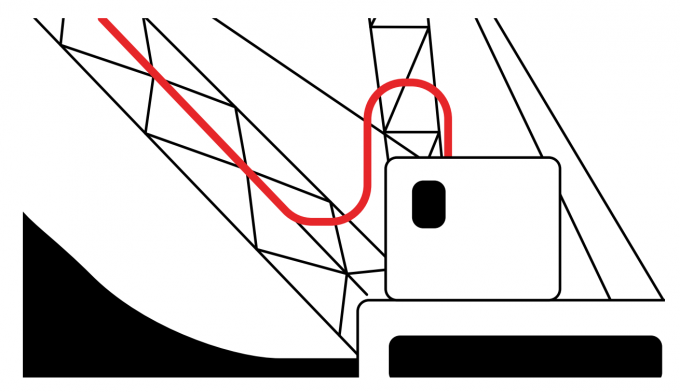

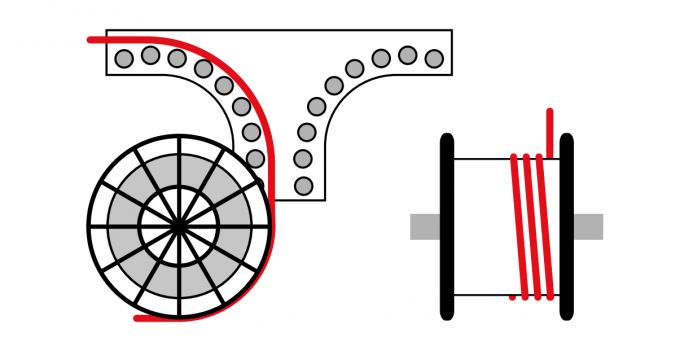

Conclusion: The Future of Port Cables Is Hybrid and Resilient
The Kevlar-reinforced Type (N)TSKCGEWÖU flexible reeling cable from Feichun Cables is a transformative solution for Australian and New Zealand ports, from the bustling Port of Melbourne to Auckland’s trade hub. Its hybrid design, integrating power and optical fiber, simplifies installation and enhances reliability in automated systems like STS cranes, RTGs, and shore power setups. With Kevlar reinforcement, a durable PUR or NBR sheath, and compliance with AS/NZS2802, VDE0250-814, and IEC60245-6 standards, this cable is built to withstand the harsh marine environments of ports like Fremantle and Brisbane.
As Australasian ports evolve over the next decade, embracing automation and sustainability, the Kevlar-reinforced Type (N)TSKCGEWÖU cable offers a resilient, future-proof solution. Port operators are encouraged to request technical data sheets or samples from suppliers like Feichun Cables to evaluate its fit for their specific needs. By adopting this high-performance cable, ports can enhance efficiency, reduce maintenance costs, and support the region’s trade-driven economy.
How to Reach Us
Get in Touch
SiteMap
Product Catalogue
Reeling Cable
Festoon Cable
Shore Power Cable




Scan to add us on WeChat


